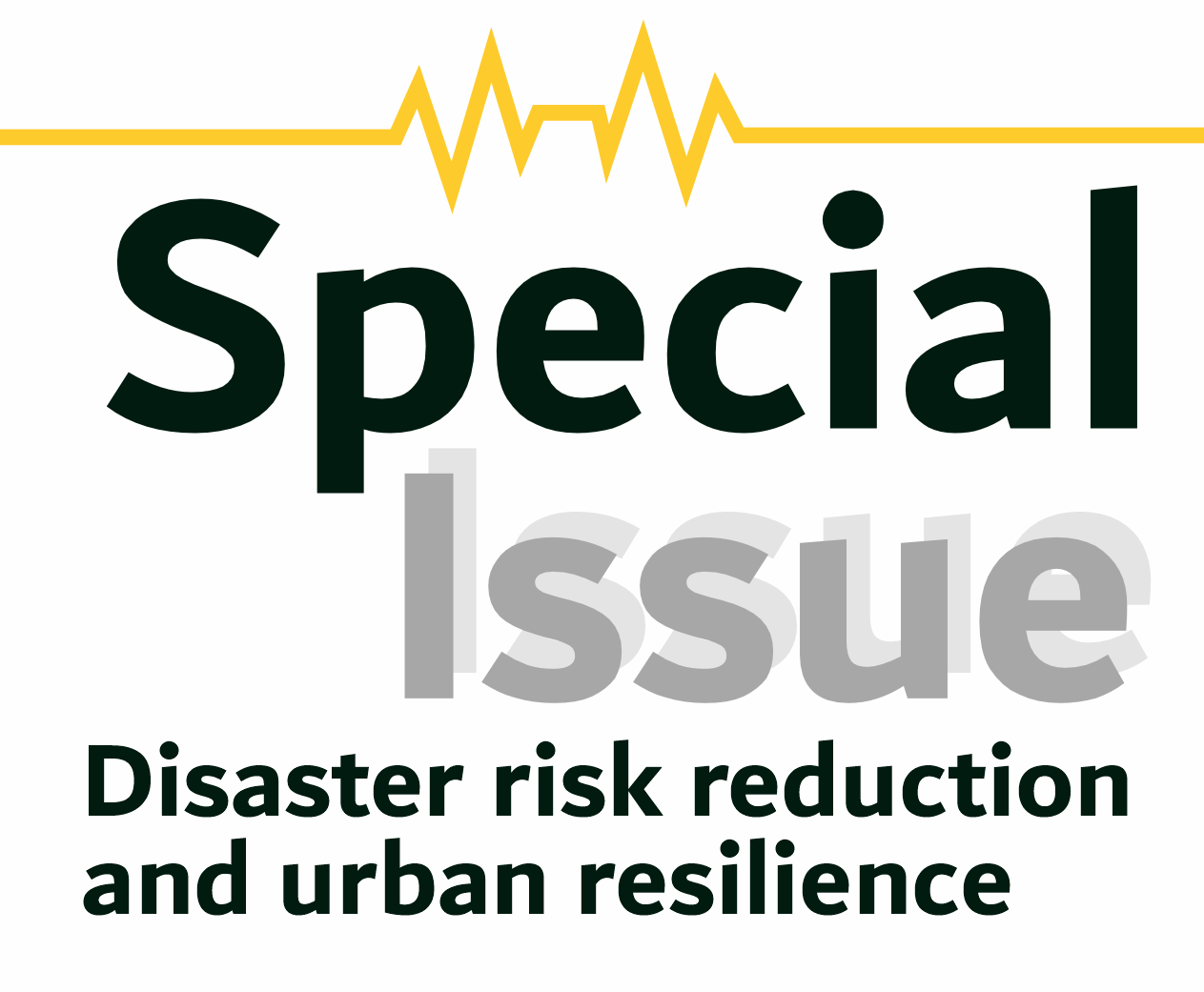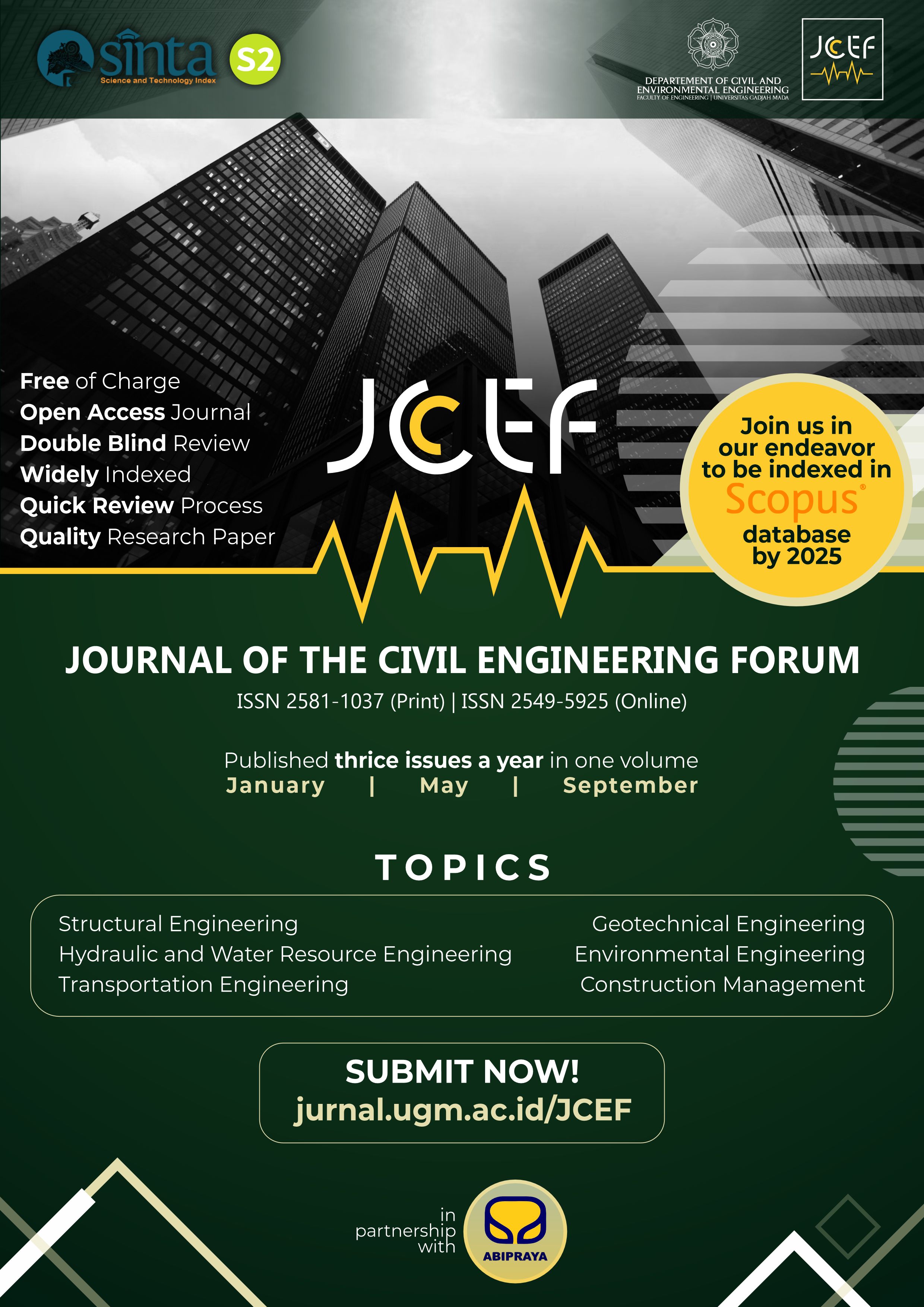The Mandatory 4 Years Desludging Frequency of Underground Septic Tanks in Residential Areas: A Case Study in Sibu Sarawak, East Malaysia
Abstract
Underground septic tanks are the most common and conventional primary black water treatment adopted by local households in Sarawak. To ensure its usefulness, periodic mandatory desludging or emptying of the various types of rateable holdings was enforced from 1998. The current mandatory desludging frequency is 4 years for residential households, although its effectiveness is still not clear, substantial annual finance and subsidies are being allocated by the Sarawak State Government. In this study, the underground septic tanks in Sibu located in residential areas in Sarawak, East Malaysia, were evaluated quantitatively based on the measured faecal sludge with a known retention time in respect to the regulated desludging frequency. Furthermore, various problems were encountered during the initial measurement carried out by sludge judge which typically used by the wastewater treatment and chemical plants. A modified PVC pipe was proposed to overcome these observed problems. This has greatly improved the measurement time and substantially reduced unwanted impediments for the contractor during desludging. The back analysis results showed that the recommended desludging frequency based on the ratio of total sludge and scum to the effective working volume in 30% and 50% thresholds for residential areas were 3.82 and 6.36 years, respectively. Furthermore, it was discovered that there was a potential to adjust the existing mandatory 4 years desludging frequency to a longer period for cost-effective consideration. This study is strictly on the physical quantity measurement of sludge and scum volumes for the known retention times. The complex influences of microbiological activities, micro-environmental factors and sizes or geometries of septic tanks for faecal sludge production were not considered.
References
Centre for Water and Sanitation (CWAS), September 2020. Standard Operating Procedures for Desludging of Septic Tanks, CRDF, CEPT University.
Environmental Protection Agency (EPA), 2018. Reserach Report No. 253 – Desludging Rates and Mechanism for Domestic Wastewater Treatment System Sludges in Ireland (Authors: Laurence Gill, Joanne Mac Mohon, Jan Knappe, Salem Gharbia & Francesso Pilla), Government of Ireland. Gary N.F., 1995. The Influence of Sludge Accumulation Rate on Septic Tank Design. Environmental Technology, 16, pp. 795-800.
Karen M., 1984. Estimating Septic Tank Pumping Frequency. Journal of Environmental Engineering, 110(1), pp. 283-285.
Linda, S., Mariska R., & Damir, B. 2014. Faecal Sludge Management, System Approach for Implementation and Operation. United Kingdom: IWA Publishing.
Local Authorities (Compulsory Desludging of Septic Tanks) (Amendment) By-laws, 2002. The Local Authority Ordinance, 1998, Government of Sarawak.
Ministry of The Environment (MOE), February 1977. Reserach Report W 63 – Accumulation Rate and Characteristic of Septic Tank Sludge and Septage (Author: Brandes.M). Toronto, Ontario.
Pierre-Henri, D., Mbaye, M., Ousmane, S., & Linda, S., 2012. Capital and Operating Costs of Full-Scale Fecal Sludge Management and Wastewater Treatment Systems in Dakar, Senegal. Environmental Science and Technology, 46, pp. 3705-3711.
Philip, H., Maunoir, S., Rambaud, A., & Philippi, L.S., 1993. Septic Tank Sludges: Accumulations Rate and Biochemical Characteristics. Water Science Technology, 28(10), pp. 57-64.
Tarek E., 2013. Sludge Accumulation and Conversion to Methane in a Septic Tank Treating Domestic Wastewater or Black Water. Water Science & Technology, IWA Publising, pp. 956964.
Terry, R.B., 1994. Septic Tank septage Pumping Intervals. Atlanta, Georgia, Conference of the American Society of Agricultural Engineers.
Thurston County Washington’s Public Health and Social Services, 2021. Brochure – Inspecting Your Septic Tank. [Online] Available at: https://www.co.thurston.wa.us/health/ehoss/pdf/StickTestBrochure.pdf [Accessed 26 August 2021].
The Institution of Engineer, Malaysia (IEM), 2021. Webinar – Mandatory Scheduled Desludging of Septic Tank. [Online] Available at: https://www.myiem.org.my/events/eventregistra tion.aspx?id=18596 [Accessed 26 August 2021].
Water Services Industry (Desludging Services) Regulations, 2021. Water Services Industry Act, 2006, Government of Malaysia.
United States Agency International Development (USAID), June 2008. Operations Manual on The Rules and Regulations Governing Domestic Sludge 155 and Septage, The Philippine Department of Health.
U.S. Environmental Protection Agency (USEPA), February 2002. Onsite Wastewater Treatment 156 Systems Manual, Office of Water, Office of Research and Devlopment.
Copyright (c) 2022 The Author(s)

This work is licensed under a Creative Commons Attribution-ShareAlike 4.0 International License.
Copyright is granted to authors for the purpose of providing protection for articles written to describe experiments and their results. JCEF will protect and defend the work and reputation of the author and are also willing to address any allegations of violation, plagiarism, fraud, etc. against articles written and published by JCEF. JCEF is published under the terms of the Creative Commons Attribution-ShareAlike 4.0 International License (CC BY-SA 4.0). The author holds the copyright and assigns the journal rights to the first publication (online and print) of the work simultaneously.





